Greetings to everyone reading this b / w! :)
There are now practically in any even the smallest auto parts store aerosol cans of silicone lubricant for every taste and wallet. I will not repeat the properties of this universal grease. But as you read the reviews of the people, this type of lubricant is used somehow one-sidedly. Like anointed rubber seals, rugs, sprinkled in the locks, processed tires. One eccentric even wrote that he sprayed the wiper blades with such silicone - he spat that he barely wiped off the stains :)) But that's not the question. In any car from below:), and even on the Niva there are so many rubber anther covers that protect the vital components of the car from moisture, dirt and, accordingly, from rapid wear + brake hoses, of course.
These rubber bands, and even silicones, require constant attention. Especially relevant in winter period... Frozen mud, ice that melts from salt or some other chemical on the road, or sharp grains of compressed snow-ice off the road wipe or break through the elastic bands that have lost their elasticity in the frost very effectively. And after the end of winter in the heat, they are simply covered with a net of small cracks and torn ... You probably shouldn't describe how laborious it is to replace the boot of the inner CV joint: ((
Do not know who how, but at me as a rule at the beginning of each winter season
external treatment of these critical rubber products with silicone grease. And for the entire period that the machine I still have more than one rubber band in cold weather, after climbing in the snow it did not crack :) I tried different lubricants: RW6085, BBF, WD-40 / only silica, not legron! /
All with approximately the same result stick to rubber, silicone, plastic. And the price is about the same. They speak very flatteringly about silicone grease Hi Gear, but it costs 2 times more ...
In general, from my experience, I advise, but decide whether to do it or not :))
Long years of service and many kilometers to your typewriters!
Sincerely.
Evgeniy
These are the universal silicone greases RW 6085, WD-40 silicone, BBF used in different years.
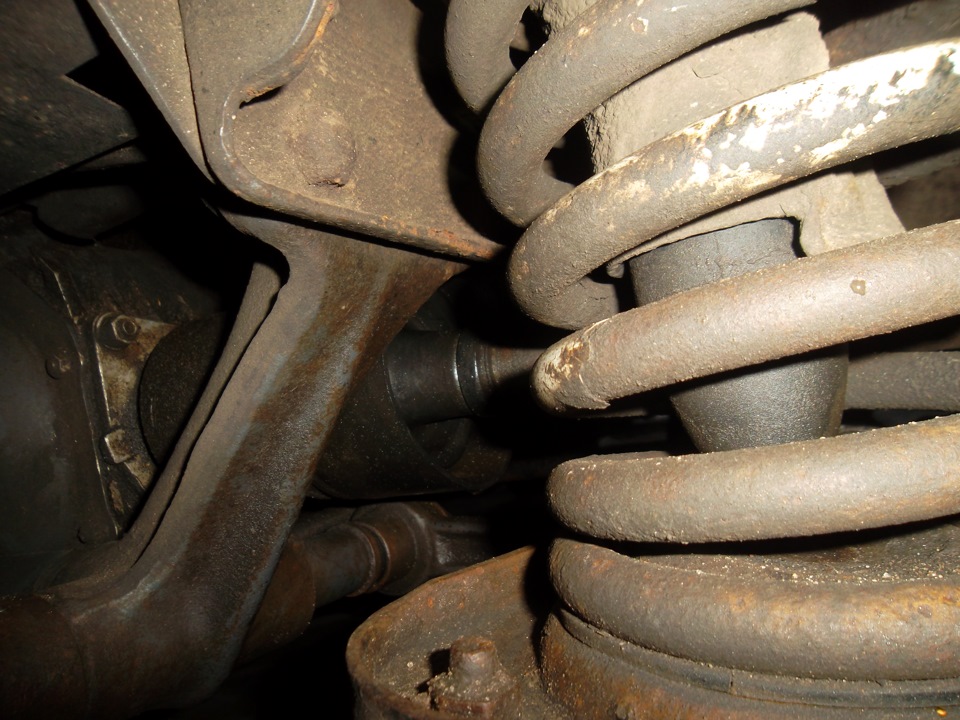
And now after 500 km of winter roads. Here is the cover of the inner CV joint - elastic, it shines with grease :)
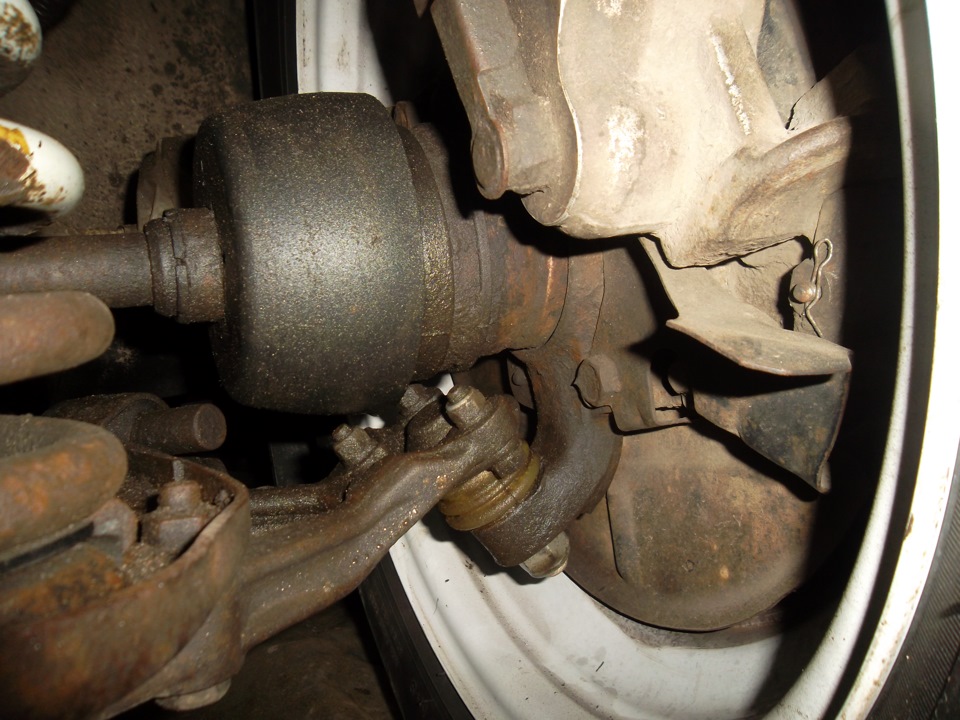
- Anther types and their difference.
- What is a boot and why is it needed.
Duster - from the name it becomes clear that this device must somehow be associated with dust or dirt, and you are not mistaken. The boot serves to protect the moving parts from dirt getting into them, because, as you know, dirt and sand are an excellent abrasive that reduces the service life of a part many times over. In addition, the boot often serves as a receptacle for lubricant and prevents it from flowing out. An excellent example of this is the CV joint boot or ball joints, but more on that later.

- Anther types and their difference.
The boot is most often a rubber product made in the form of a cone, assembled at the same time in an accordion. This is done so that the boot is mobile, as it is most often installed on moving and critical parts of the car. Rubber boots are very durable and strong, their big plus is that due to the rubber used as a basis, the boot is very mobile and can deform without damage to itself. Striking examples of such anthers are: CV joint boot, steering rack boot, tie rod tip and ball joint boot. These anthers are constantly subjected to torsional and tensile stresses. Anthers are fastened with clamps or retaining rings. The disadvantages of rubber anthers are that, like any product, they have a service life and, if not carefully used, the anthers break, and in the cold they harden and crack from stress.
Plastic and silicone anthers. In fact, these are analogs of rubber anthers made of a different material. Plastic anthers are famous for their resistance to mechanical damage, and silicone ones are resistant to large temperature fluctuations.
Metal anthers. Yes, yes, there are such. A striking example of such anthers is the boot located on steering knuckle, and protects the wheel bearing from dust and dirt, which is already subject to enormous loads. The metal boot is hammered into the groove between the parts.
- When and why to change the anthers.
As I wrote above, the anthers serve to protect against dirt, respectively, if the boot is damaged, it is immediately stuffed with dirt and mixed with grease crumbles the bearings and "gnaws" the cracks, leaving behind a development.
If the boot is damaged, and grease creeps out from under it, then such a boot must be replaced, and a new one must be filled with grease. It is worth doing the same with a cracked anther, so as not to reap the "benefits" later.
- Replacing anthers with your own hands in a garage.
Five paragraphs earlier, I said that the anthers are attached to clamps, retaining rings, or simply clogged. And it would seem that everything is extremely simple, unscrew the clamp and change the boot, but then the main snag awaits. Removing the old boot is not difficult, because it is enough to cut it, but in order to put on a new one, you need to free the edge of the part.
Replacing the anther of the CV joint of the angular velocities of the VAZ 2109.
- First you need to unscrew the grenade from the hub. This is done with a 30 mm head using a small lever.
- We pull out the hub so that the CV joint gets off the splines and crawls out.
- It remains to remove the grenade from the drive.
- We cut the old boot and clean out the old grease; this can be done with diesel fuel or special fluids.
- We put the boot on the axle, lubricate the bearing with grease "for CV joints" and fill the boot itself with it.
- On one side and on the other, we squeeze the boot with clamps.
- Install the CV joint in place and fasten the wheel.
Any car contains a significant number of moving parts and connections from the outside and the engine compartment. This is especially true for front-wheel drive cars, steering and suspension.
Long-term and trouble-free operation of mating parts and connections depends on the lubrication and cleanliness of the rubbing surfaces. If foreign objects such as sand, dust and dirt get into lubricants used to lubricate the rubbing elements, as well as on their surface, they act as abrasive materials that lead to intensive wear of the rubbing elements. Any structural element that has associated parts from the influence of polluting particles very quickly fails.
SHRUS design
Anthers are used. They are located at the top and prevent contaminants from entering the shock absorber rod. They do not perform such a protective function as on SHRUS or ball bearings, since the fit of the rod in the shock absorber body is already tight enough to keep dirt out. The shock absorber anthers are rather intended to clean the rod from large contaminants. And since the stroke of the shock absorber rod is large enough, often the shock absorber boot is not fixed at all and is held by fitting the boot.
I'll tell you about my experience in repairing the external CV joint boot in the field. Let's first define what a CV joint is? A hinge of equal angular velocities - this is how this abbreviation stands. The purpose of this mechanism is to transfer rotary motion from the gearbox to the swivel wheels. It is located on the front drive axle shafts, directly at the front wheel hub. This is a rather important part due to the fact that if one SHRUS breaks down, the connection between the drive wheel and the engine is broken; all the torque is wasted, as if one of the drive wheels is suspended off the ground while the other is on the ground. At the same time, the car is no longer going anywhere. After that, only a tow truck will help you. The CV joint of the drive shaft is reliable enough and can be used for a long time, if you observe simple rules operation: the hinge must always be in a special thick oil. The ingress of water and sand into the hinge is unacceptable and causes its quick "death". In order to avoid the ingress of sand and water, the CV joint is protected by a rubber corrugated cover. To extend the life of the CV joint, this cover must be periodically checked for cracks and tears. It is especially worth doing this on old cars, because rubber loses its elasticity over time and begins to crack and tear. It is not difficult to check this - for this you need to unscrew the steering wheel to the extreme right position and inspect the boot of the right wheel, then turn the steering wheel to the extreme left position and inspect the boot of the left wheel. Inspection is even easier if there is a repair pit or lift. What if you still find a ruptured anther? The answer is simple - change. But what if there is no workshop, no garage, and you need to go urgently and far?
Preparing for another summer trip from Moscow to Crimea, I checked my car to rule out any troubles on the way. No breakdowns or damages were found and we set off. Having ridden a lot along the Black Sea coast, after three weeks of vacation, it's time to go back. A quick inspection of the inner CV joints before driving revealed a gap in the left and a crack in the right anthers. This was the most unpleasant news for me. Driving on gravel, rural areas has left a mark. But, it is not the time to be sad, it is necessary to correct the situation at least temporarily - for the period of the road from Simferopol to Moscow. And there it will already be possible to find both the anthers themselves and the time to replace them.
To carry out the operation on this critical unit, around the house were collected: a paper cutter, scotch tape, a pair of new plastic garbage bags, an empty (clean) silicone tube, a silicone gun, strong rope, gloves, a can of lubricant for CV joints and rags ... a lot of rags :)
There was no hole at hand. Therefore, putting the car on the handbrake, hammering under rear wheels wheel chocks in the form of bricks, hanging front wheel I set up a jack for insurance suitable size a stump in case the jack suddenly wants to jump off.
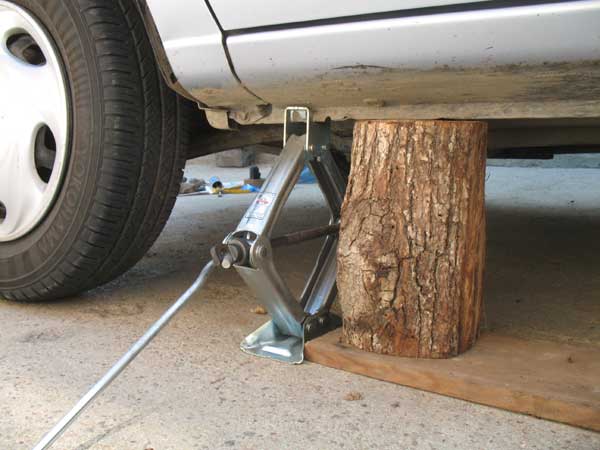
First of all, I removed the remnants of the grease with the dirt that had stained the entire case. To do this, I applied a rag to the boot and turned the wheel with my hands a few turns:

Then, I collected grease for CV joints in an empty silicone tube. Gently blew out the grease into the remains of the anthers. And so that the grease does not run away again, he took a plastic bag, spread it across its entire width, pushed it into the grooves of the cover with his fingers and spun the wheel in the direction of travel. As a result, I got this thing:

Then, I tied each of the "grooves" of the cover with a rope in order to secure the bag and at the same time reduce the aerodynamic drag, which can tousle and tear the bag ahead of time.
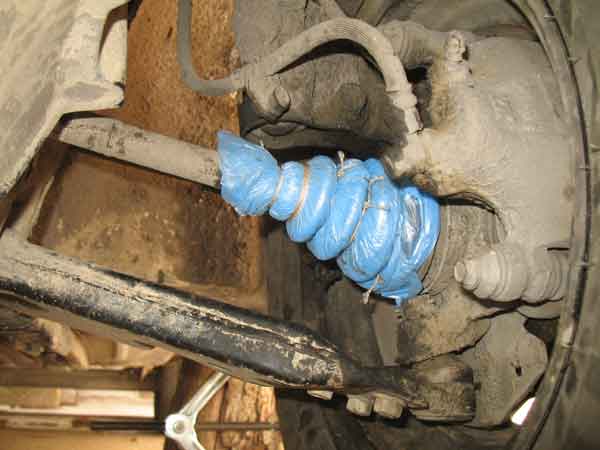
I did a similar operation with the second wheel, with the only difference that I additionally wrapped it up with scotch tape. This was done for an experiment. I wrapped one CV joint with a "regular bag", and the second - also with "magic tape". The result of the work satisfied me:
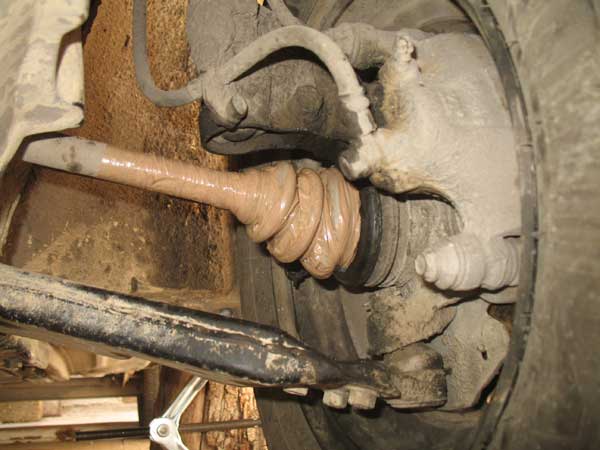
After 1452 kilometers, my "field covers" of my appearance have not changed. That is, they looked like this:

We can safely say that I was not in vain, I did not give off the CV joints in offense.
If things are bad and you suddenly need to evacuate a car, you can find a tow truck suitable for the price and location in the tow trucks catalog -


